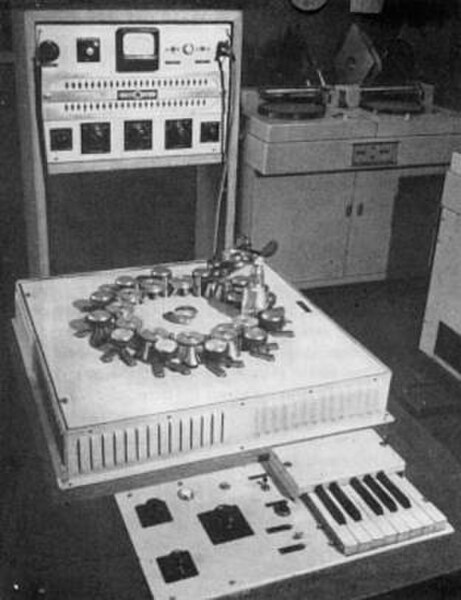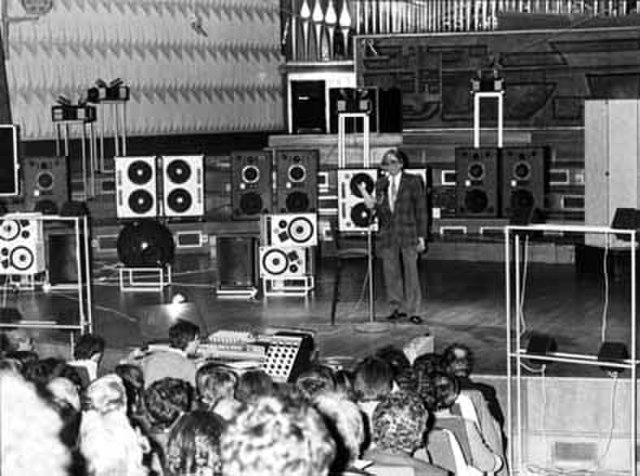Live electronic music is a form of music that can include traditional electronic sound-generating devices, modified electric musical instruments, hacked sound generating technologies, and computers. Initially the practice developed in reaction to sound-based composition for fixed media such as musique concrète, electronic music and early computer music. Musical improvisation often plays a large role in the performance of this music. The timbres of various sounds may be transformed extensively using devices such as amplifiers, filters, ring modulators and other forms of circuitry. Real-time generation and manipulation of audio using live coding is now commonplace.
Stockhausen (2 September 1972 at the Shiraz Arts Festival, at the sound controls for the live-electronic work Mantra), who wrote a number of notable electronic compositions in the 1960s and 1970s in which amplification, filtering, tape delay, and spatialization was added to live instrumental performance
Farmers Manual 2002, performing laptronica
Keith Rowe (pictured in 2008) improvising with prepared guitar at a music festival in Tokyo
Electronic music broadly is a group of music genres that employ electronic musical instruments, circuitry-based music technology and software, or general-purpose electronics in its creation. It includes both music made using electronic and electromechanical means. Pure electronic instruments depended entirely on circuitry-based sound generation, for instance using devices such as an electronic oscillator, theremin, or synthesizer. Electromechanical instruments can have mechanical parts such as strings, hammers, and electric elements including magnetic pickups, power amplifiers and loudspeakers. Such electromechanical devices include the telharmonium, Hammond organ, electric piano and electric guitar.
Front page of Scientific American in 1907, demonstrating the size, operation, and popularity of the Telharmonium
Leon Theremin demonstrating the theremin in 1927
Phonogene (1953), a tape machine for modifying the sound structure, developed by Pierre Schaeffer et al. at GRMC
Pierre Schaeffer presenting the Acousmonium (1974) that consisted of 80 loudspeakers for tape playback, at GRM







